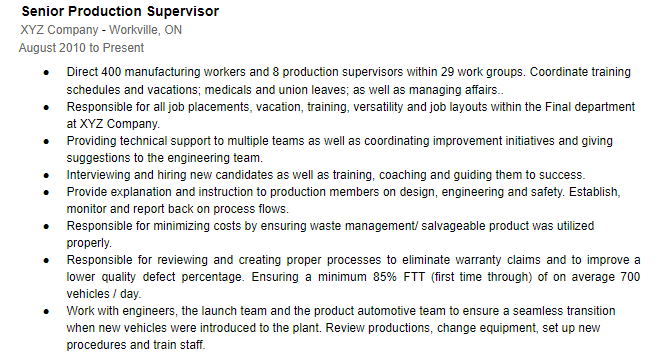A resume is a snapshot of your proficiencies developed throughout a history of employment and/ or education. Formatting a resume, and deciding which information to include may be tedious at times. When crafting a resume, it’s easy to unknowingly include mistakes. Unfortunately, these errors will significantly reduce your chance of landing your dream interview.
In order to maintain professionalism, and ensure your resume stands out among other candidates, avoid these mistakes:
- Oversharing personal information
- Lack or no job descriptions per roles
- No Location of position or dates of employment
- Missing or outdated contact information
- Photos
- Large gaps in employment or multiple short employment positions
Oversharing personal information on your resume

As Headhunters, we often stumble upon resumes where candidates overshare personal information. Some of which, should never be included on a resume. Although an employer may be empathetic, a resume should highlight why you’d be a fit for the position. It should never include emotional aspects that take away from your skillsets.
Emotional aspects to never include on your resume:
- Personal health issues
- Family issues
- Financial issues
- Legal issues
Alternatively, personal information you should include are:
- First and Last Name
- Home Address
- Phone number (current)
- Email address (updated)
Lack or no job descriptions per roles
As mentioned earlier, resumes are a snapshot of your professional aptitudes. Your employment history, and previous job duties make up the bulk of your resume. Including concise, keyword rich, and fact based job descriptions allows your potential employer to create a clear depiction of your performance. In other words, your resume should be able to sell you. Therefore, including only the title of your position is not sufficient enough.
Your employment history section should refrain from looking like this:

As you can see, in this example; the candidate failed to include any duties related to his position. Regardless of employment duration, candidates must include a description per job position. In this particular case, the Carpenter had been employed for just over 3 years with the same company. Therefore, there is an abundance of job specific achievements and descriptions that could have been included. Aim to include 3- 5 strong, robust bullet points per job description. For long-term positions, include a maximum of 8; as long as they are relevant!
Additionally, your descriptions must be clear and robust. Let’s review the following cautionary example:

Although this candidate did include some information- unfortunately the description lacks robustness, keywords, proven fact and clarity. “Increased client number to two times in 2 years, from 20 to 44” does not really provide a clear understanding of the achievement. Including percentages, concrete numbers and how this particular achievement benefited the company, will add credibility to your sentences. For instance, the candidate’s second point includes information that could have been broken up into into 2 or 3 detailed bullet points. Additionally, they could have mentioned specific percentages when discussing increased sales for the company.
Now, let’s take a look at what a proper job description looks like:

Clearly this candidate has put in the effort to craft a robust, factual and clear work history. For starters, they have stated their title, company and location properly. Additionally, they have effectively communicated their industry of expertise; their responsibilities; highlights and achievements, including concrete numbers. Furthermore, to avoid confusion, this candidate also explained the “FTT” abbreviation. A job description as such conveys the message that the applicant has the ability to lead in a fast paced environment; while providing results.
No location of position or dates of employment
When including each employer in your work history, ensure you include at least the month and year of both the start and end date. The format (Month Year – Month Year) is preferred.
As listed in the below example, this candidate failed to include the years he’s worked and the location of the employer. Unfortunately, this does not give the hiring manager enough insight as to how long the employee worked for. It’s impossible to understand a candidate’s employment timeline if reflected improperly.

Location of each employer is also crucial to include. This gives the hiring manager a sense of the distance the candidate is comfortable travelling for work. For example, a candidate lives in Milton and applies for a job in Toronto. The company hiring usually prefers local Toronto candidates; due to the high traffic area. However, since the candidate disclosed their current position is in Toronto, the hiring manager feels the candidate is worth interviewing.
Missing or outdated contact information

As mentioned earlier, all resumes should include first and last name; home address; a current phone number; and an updated email address.
- Home address: make sure the address listed is current and includes the city and province.
- Phone Number: make sure your voice mailbox is empty in order to allow messages.
- Email Address: confirm spelling is correct to avoid bounce backs.
Remember: if you are completely inaccessible, the company will move on to another candidate. You do not miss out on an opportunity simply because of contact issues.
Photos

In order to avoid any biases, candidate photos should not be included on a resume. Adding a visual representation of yourself may disclose your sex, ethnicity and age. We want to limit unconscious preferences exerting influence within the recruitment process as much as possible. Including your LinkedIn also does not eliminate biases.
Large gaps in employment or multiple short employment positions
Hiring managers look at the timeline of your employment history in entirety. As mentioned previously, this is why providing accurate dates is crucial. The company wants to understand what type of employee you potentially are. Have you been employed and promoted within the same company for 10 years? Or have you had 5 different job positions within the last 5 years? Employment timelines paint a picture as to how committed an employee is to their employer. Of course, employees are free to change jobs within their lifetime; however some provide more justification for hiring an employee over another.
Unfortunately, applicants with work gaps in their resume have a 45% lower chance of getting job interviews. This is why it is extremely crucial to explain your employment gaps on your resume. If you were on maternity leave, refer to this quick guide to updating your resume after maternity leave. Remember, there is nothing wrong with taking leaving from the workforce. The most important aspect is that it’s clearly noted on your resume so the hiring manager has a clear understanding of the circumstance.
If your application includes short employment positions; this may initially raise a few concerns with the hiring manager (depending on the position). Should your position(s) be contract work, ensure you mention that near the dates of employment. If you have included positions that are not relevant to the job you’ve applied for, you may restructure your resume to exclude those. For example, a University Graduate is looking for a Finance position. Their resume states they have completed a 4 year paid internship with an Accounting Firm. They also included that they have worked as a Summer Sales Associate for 4 months prior to accepting the internship. In this case, the candidate could remove the Sales experience as it does not pertain to her current role.
Please note: refrain from blaming past employers for short employment positions or gaps. Your resume will be disregarded by hiring managers if it includes unprofessional vocabulary.
Looking for more Career Advice? Check THIS out!
Conclusion
In conclusion, 6 mistakes to NEVER include on your resume are:
- Oversharing personal information
- Lack or no job descriptions per roles
- No Location of position or dates of employment
- Missing or outdated contact information
- Photos
- Large gaps in employment or multiple short employment positions
Before you submit your resume for one of our job positions; make sure that there are no mistakes on your application. This will ensure that your resume gets priority recognition from the company you’ve applied to. Luckily, these mistakes can be easily avoided and corrected altogether. Apply these tips to your resume and you’ll be hearing back from hiring managers in no time!
